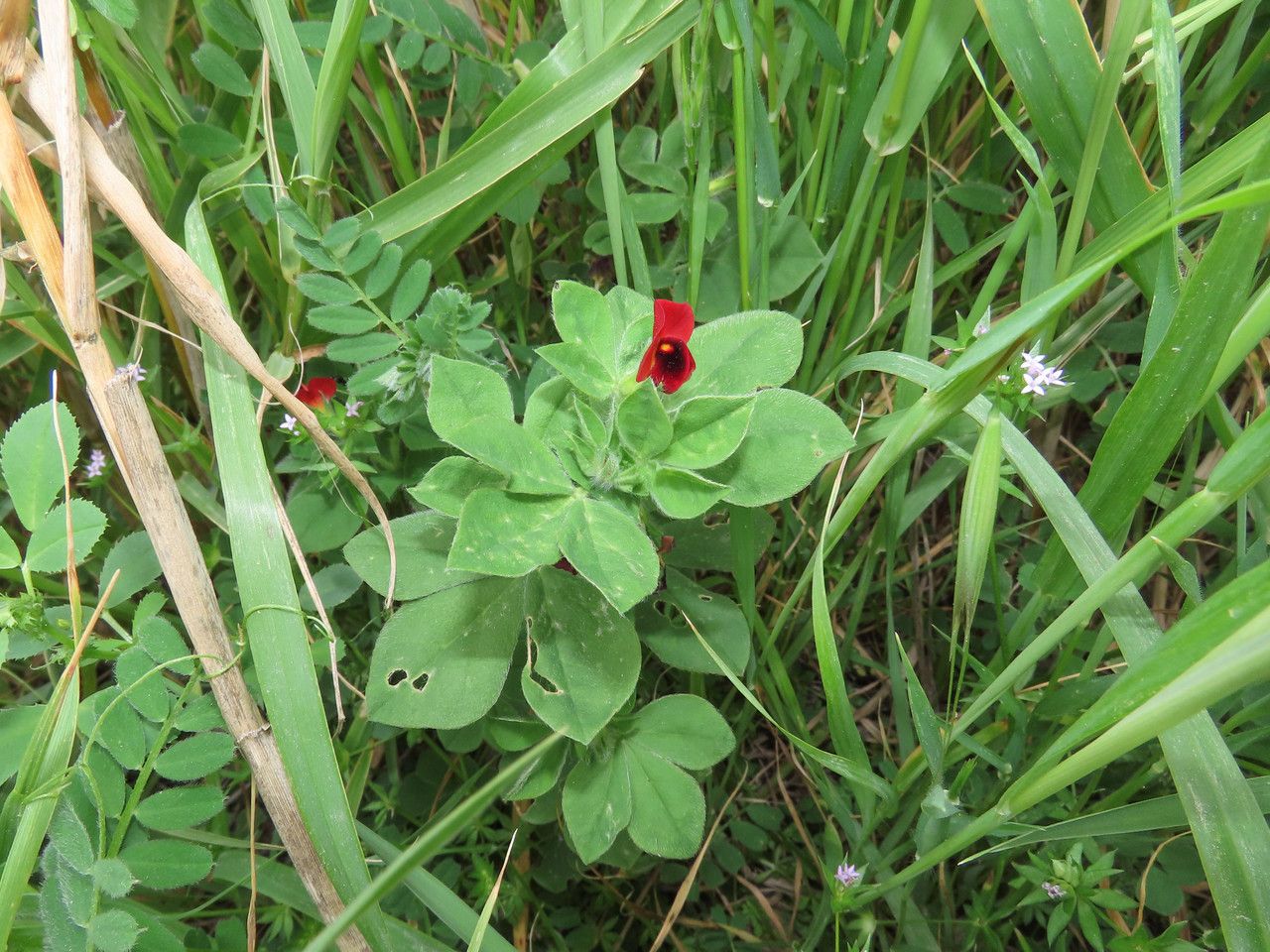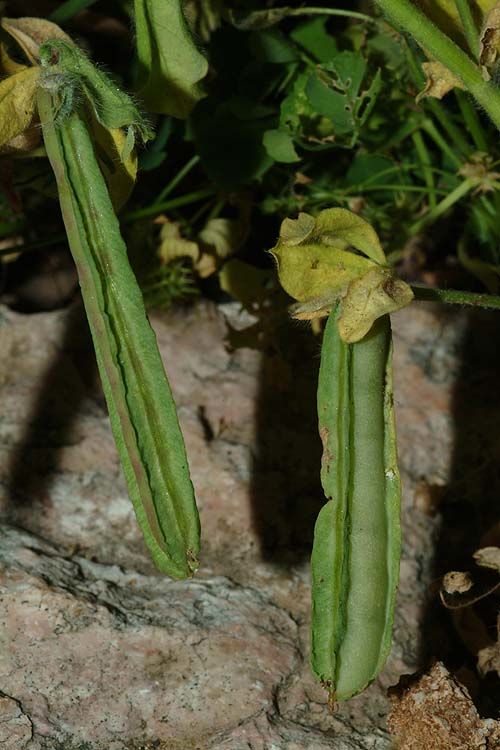Asparagus Pea
lotus tetragonolobus
Also known as: ["Asparagus Pea","Four-cornered Lotus","Dutch Asparagus"]
Overview
A low-growing annual legume with edible pods resembling asparagus tips, native to Europe and Asia.
Benefits & Perks
["edible fruits","culinary herb","aesthetic foliage","drought tolerant"]
Botanical Classification
| Phylum: | Magnoliophyta |
| Class: | Magnoliopsida |
| Order: | Fabales |
| Family: | Fabaceae |
| Genus: | Lotus |
| Botanical Name: | Lotus tetragonolobus |
Plant Characteristics
Basic Information
- Category: Herbs & Weeds
- Suitable Location: garden bed or container in a sunny spot with good air circulation
- Suitable For:
- Is Weed: No
- Allergenicity: low
Environmental Needs
- Climate: {"temperatureRange":"10–30°C"}
- Hardiness: {"zones":"7–10"}
- Misting: rarely required, only if ambient humidity is very low
- Drainage: Fast-draining to prevent waterlogging.
- Soil Type: Well-draining, loamy soil with added organic matter.
Maintenance Level
- Maintenance Level: low
- Toughness Level: moderate
- Pruning Frequency: As needed; remove spent flowers or yellowing leaves promptly.
- Pruning Intensity: Light to moderate; avoid heavy pruning unless necessary for disease control.
Care Details
Ideal Sunlight Coverage:
Full sun (6–8 hours/day); tolerates partial shade but may produce fewer pods.
Sunlight Tolerance Tips:
Acclimate plants gradually to full sun if moved from shade; protect from intense midday sun in hot climates; ensure good air circulation to prevent fungal issues.
Care Requirements
Care Difficulty
easyeasy
Sunlight
full sun to partial shade
Rotate plants for even light exposure; use shade cloth in extreme heat; avoid placing near reflective surfaces that intensify sunlight.
Watering
every 7–10 days, allowing soil to dry slightly between waterings
Water thoroughly but infrequently; ensure proper drainage; avoid wetting foliage.
Soil
well-draining, loamy soil with moderate organic content
pH: 6.0–7.0 (slightly acidic to neutral).
Test soil pH annually; amend with lime if too acidic; ensure soil is loose and crumbly.
Temperature
Prefers 60–85°F (15–29°C); tolerates light frosts but grows best in warm conditions.
Use a thermometer to monitor microclimates; adjust watering based on temperature fluctuations; protect from drafts or heat sources.
Fertilizing
every 4–6 weeks during growing season with balanced liquid fertilizer
Apply fertilizer at half-strength to avoid burning roots; water before fertilizing to prevent root shock; avoid fertilizing dry soil.
Propagation
Methods
Seeds; direct sowing or indoor starting in trays.
Step-by-Step Propagation Guide
- Sow seeds 1/2 inch deep.
- Keep soil moist.
- Thin seedlings to 6–12 inches apart.
- Harden off before transplanting.
Best Time: Spring, after last frost; indoor starting can begin 4–6 weeks before last frost.
Environment
Warm (70–75°F), bright indirect light, consistent moisture.
Medium
Seed-starting mix or well-draining potting soil.
Hormone
Not required for seeds.
Timeline
Germination in 7–14 days; plants ready for transplant in 4–6 weeks.
Tools Needed
Seed trays, potting mix, watering can, labels.
Quick Tips
Soak seeds overnight to speed germination; use a heat mat for faster sprouting; avoid overcrowding seedlings.
Pruning & Repotting
Pruning Guide
Method
Snip off dead or diseased parts with clean cuts; pinch back tips to encourage bushier growth.
Pruning Plan
Minimal pruning needed; focus on removing dead or damaged growth to maintain plant health.
Tools
Pruning shears, sterilizing solution.
Checklist
Sterilize tools; prune during dry weather; remove only necessary parts; clean up debris.
Repotting Guide
Best Season
Early spring, before active growth begins.
Pot Size
One size larger pot; ensure good drainage holes.
Method
Gently remove plant; trim roots if pot-bound; repot in fresh, well-draining soil; water thoroughly.
Suggestions
Not typically needed for outdoor plants; container-grown plants may need repotting every 2–3 years.
Checklist
Choose appropriate pot; prepare new soil; handle roots carefully; water after repotting.
Advanced Care Tips
Watering Mastery
Watering Checklist
Check soil moisture; water deeply; ensure drainage; avoid overwatering.
How to Apply Water Properly
Water at the base of the plant, ensuring moisture reaches the root zone; allow excess water to drain away; water in the morning to reduce evaporation.
Watering Schedule Tips
Water deeply once the top inch of soil is dry; reduce frequency in winter to prevent root rot.
Soil Improvement
Add compost or well-rotted manure; incorporate perlite or sand for drainage; avoid heavy clay soils.
Temperature Stress Management
Signs of Temperature Issues
Yellowing leaves (cold stress); wilting or leaf drop (heat stress); slow growth.
Cold Stress
Growth slows; leaves may turn yellow or purple; flowering and pod production may cease.
Solution: Move to a warmer location; cover with a frost cloth if temperatures drop below 50°F (10°C); reduce watering.
Hot Stress
Leaves may wilt, curl, or scorch; flowers may drop before setting pods; growth may become stunted.
Solution: Provide shade during peak heat; increase watering; mulch to retain soil moisture; ensure good air circulation.
Fertilizing Guide
Fertilizing Checklist
Check fertilizer type; dilute correctly; apply to moist soil; avoid contact with foliage.
Fertilizing Method
Use a balanced, water-soluble fertilizer every 4–6 weeks during growing season; reduce or stop in winter.
Common Problems & Solutions
Toxicity Warning
Cats
Non-toxicLotus tetragonolobus is not known to be toxic to cats. There are no documented cases of toxicity in felines after ingestion of this plant.
🌿 Toxic Parts:
⚡ Toxic If:
if eaten
Dogs
Non-toxicLotus tetragonolobus is not known to be toxic to dogs. There are no documented cases of toxicity in canines after ingestion of this plant.
🌿 Toxic Parts:
⚡ Toxic If:
if eaten
Humans
Non-toxicLotus tetragonolobus is generally considered non-toxic to humans. It is not known to produce any significant toxic compounds that would cause adverse health effects when consumed in typical amounts.
🌿 Toxic Parts:
⚡ Toxic If:
if eaten
Frequently Asked Questions
Q: Is Lotus tetragonolobus edible?
A: Yes, the young pods are edible and have a flavor similar to asparagus.
Q: How do I grow Lotus tetragonolobus?
A: Sow seeds in well-drained soil after the last frost; it prefers full sun and moderate watering.
Q: Does Lotus tetragonolobus attract wildlife?
A: It attracts pollinators like bees due to its attractive flowers, but it is not a primary wildlife attractant.
Quick Reference
| Family: | Fabaceae |
| Care: | easy |
| Light: | full sun to partial shade |
| Water: | every 7–10 days, allowing so |
Get Expert Care Tips
Download the Plantious app for personalized care reminders and plant identification!
Google Play App Store








